前言
2023年1月26日到31日,我和朋友来到了云南普洱,实地参观了咖啡庄园和生产加工基地,观看了咖啡烘焙和杯测等咖啡生产环节,感受到了云南普洱咖啡产业在近年快速发展。从“长在深山无人知”到如今“藏香云南”的美誉声名远扬,咖啡从业者的坚持和创新力量让云南咖啡产业正走出一条属于自己的破局之路。我们也希望在未来通过自己的力量助力当地咖啡产业升级,支持乡村振兴并将更多的物产带到中国及世界各个角落。
From January 26th to 31st, 2023, my friends and I came to Pu‘er in Yunnan to visit coffee plantations and production bases. We were amazed by the rapid development of Yunnan Pu‘er coffee industry in recent years and the transformation from “no one knows in the deep mountains“ to the current reputation of “fragrant Yunnan“. The persistence and innovation power of coffee practitioners have enabled Yunnan coffee industry to take its own path out of the predicament. In the future, we strive to use our own strength to help the local coffee industry upgrade, support rural revitalization and bring more products to every corner of China and the world.

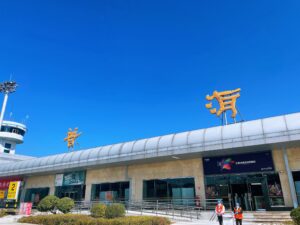






提起普洱,大家肯定会想到普洱茶。是的,普洱市(曾叫思茅)是著名的普洱茶的重要产地,也是中国最大的产茶区之一。除了世人皆知的茶叶,普洱还有丰富的自然资源,如黄金(储量103.7吨)、铁(惠民铁矿21亿吨)、铜(储量253万吨)、铅(储量35.5万吨)等矿产以及2000多万吨储量的江城钾盐矿。普洱市也是“西电东送”、“云电外送”的重要基地,并有1500万千瓦的水能蕴藏量。此外,普洱市还是全国生物多样性最丰富的地区之一,拥有超过67%的森林覆盖率,是北回归线上最大的绿洲。今天我们就来聊一聊普洱的一种珍贵的物产 — 咖啡。普洱被誉为“中国咖啡之乡”, 拥有多种珍贵品种。普洱咖啡以其突出的香气、醇厚的口感和甘甜的滋味而闻名,一直都受到消费者的青睐。
When it comes to Pu’er, the first thing that comes to mind is Pu’er tea. Yes, Pu’er (formerly known as Simao) is one of largest tea growing and producing areas in China. But it has much more to offer than just tea. This city has abundant natural resources, such as gold, iron, copper, lead and other minerals, as well as 200 million tons of Jiangcheng potassium salt reserves. Furthermore, it is an important base for “west-to-east power transmission” and ” sending Yunnan electricity to outside” programs, with a hydropower storage capacity of 15 million kilowatts. Additionally, Pu’er City is also one of the most biodiverse areas in the country, with more than 67% forest coverage, and the largest oasis on the Tropic of Cancer.
Today, let’s talk about an exquisite commodity that is highly sought-after — coffee. Pu’er is acclaimed as the “hometown of Chinese coffee” and has many valuable varieties. These coffee beans are renowned for its strong aroma and smooth sweetness, making them popular amongest coffee connoisseurs.
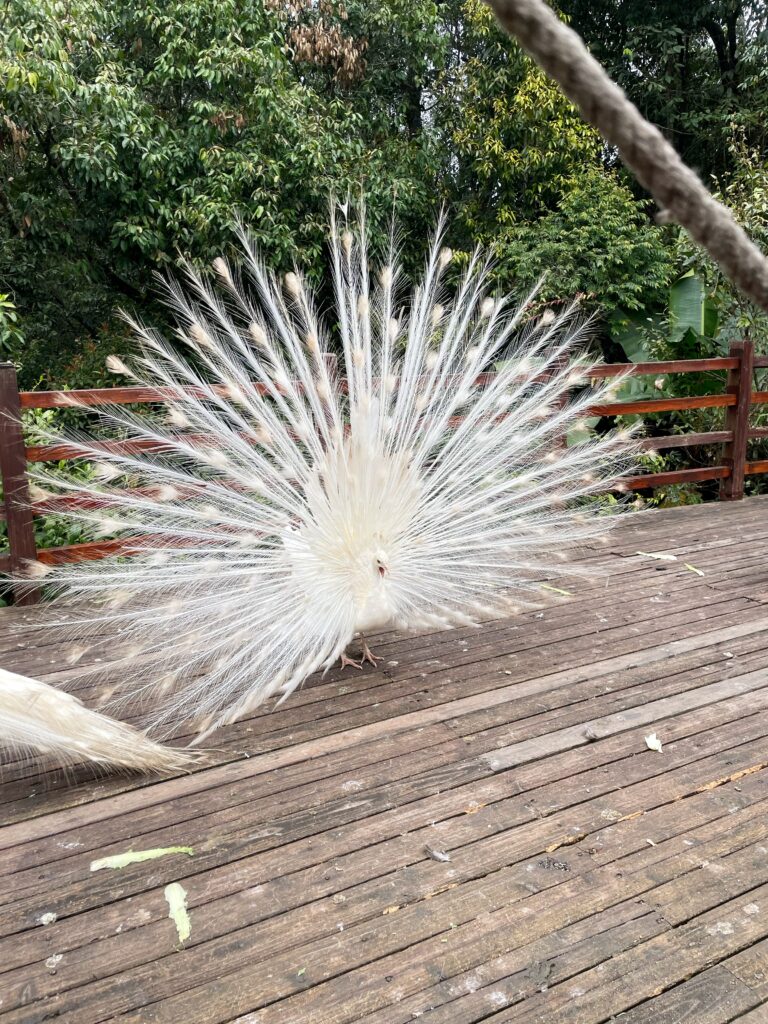



世界上许多地区都种植咖啡,包括拉丁美洲(中南美洲)、非洲、中东和南亚、东亚和太平洋诸岛。而在中国,咖啡种植主要集中在云南省,全国98%的咖啡种植面积和99.8%的咖啡产量集中在云南。云南位于南北回归线之间,是一片典型的“咖啡带”。云南有特殊的高原亚热带气候条件和丰富的土地资源,山脊可以形成一道自然屏障,隔绝北方的冷空气进入。
云南拥有海拔700-1100米,平均温度17-22度,平均降雨量700-1500毫米的低海拔高原温暖气候环境,同时具有一定的雨林气候特质,早晚温差大,日照充足,降雨量丰富以及光合作用良好。由于其天然的地理优势,云南种植出的小粒咖啡果品质上乘,咖啡有着“浓而不苦,香而不烈,略带果酸味”的独特风味。
Coffee is grown in various regions across the globe, including Latin America (Central and South America), Africa, the Middle East and South Asia, East Asia and the Pacific Islands. In China, the vast majority of coffee planting is concentrated in Yunnan Province, accounting for 98% of the country’s coffee planting area and 99.8% of its output. Yunnan Province is also renowned as “coffee belt” and is situated between the Tropic of Cancer and Tropic of Capricorn. Yunnan has special plateau subtropical climate conditions and rich land resources. The ridges can form a natural barrier that protects the region from cold air from the north.
Yunnan has a warm climate environment of low altitude plateau with an altitude of 700-1100 meters, an average temperature of 17-22 degrees, an average rainfall of 700-1500 mm, and also has certain characteristics of rainforest climate. The temperature difference between morning and evening is large, the sunshine is sufficient, the rainfall is abundant, and the photosynthesis is adequate. Due to its natural geographical advantages, the small-grain coffee fruits grown in Yunnan are of superior quality, with a unique flavor of “strong but not bitter, fragrant but not pungent, with a hint of fruity acidity”.

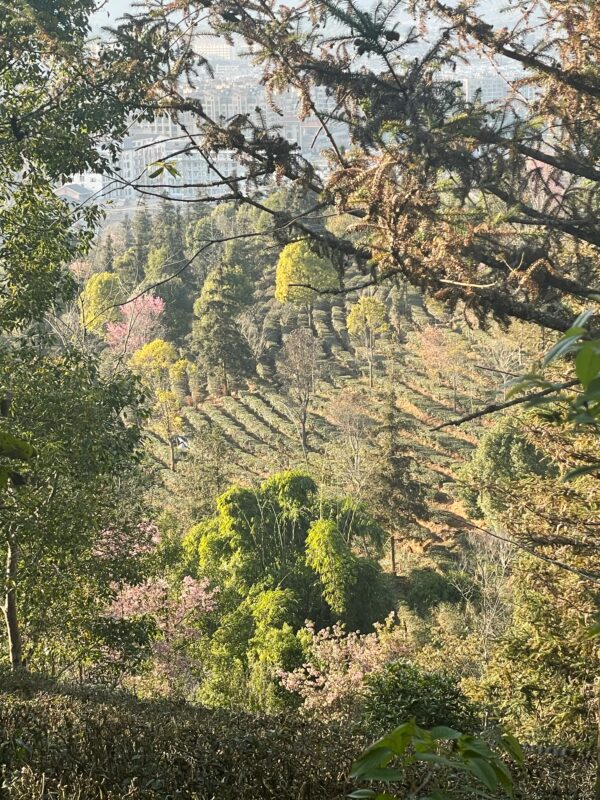



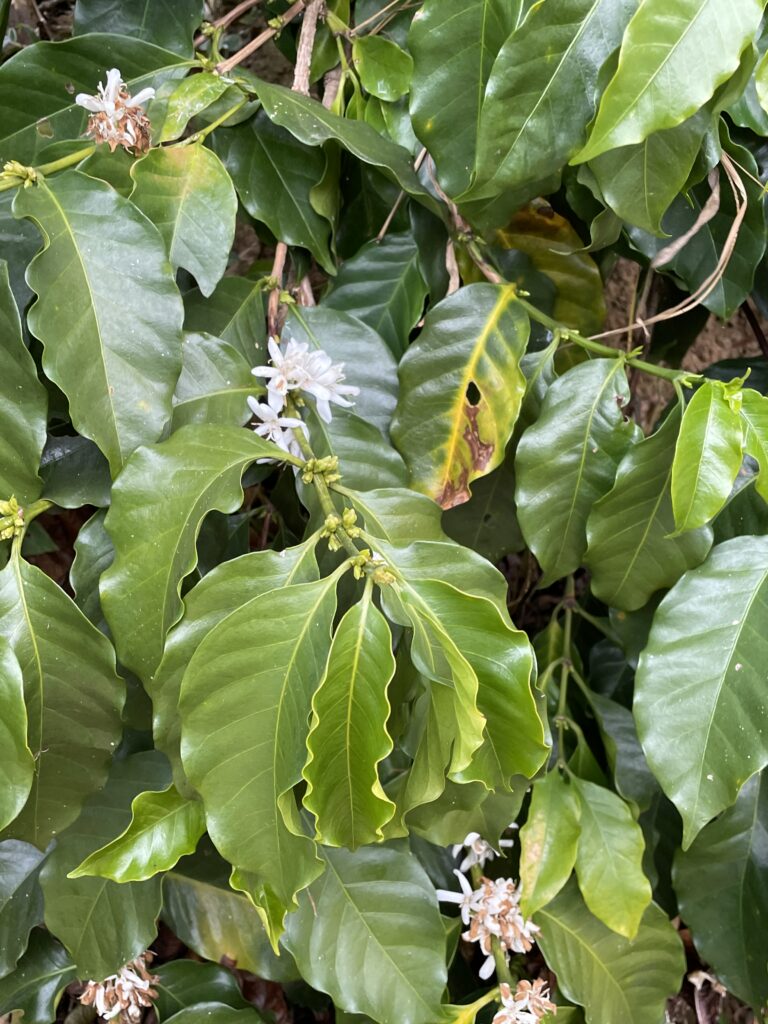
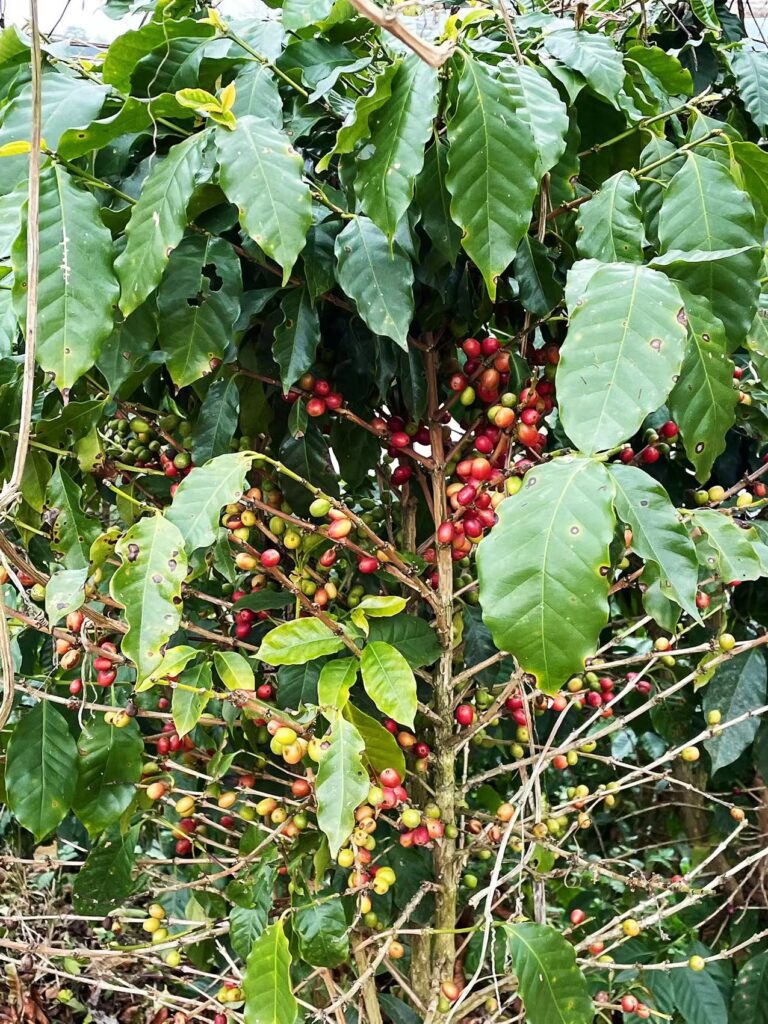
云南咖啡历史
1892年:法国传教士从境外将咖啡种带进云南,并在宾川县的一个山谷里种植成功,开启了中国发展咖啡产业的历程。
1988年:雀巢、麦氏等国际咖啡巨头进入中国市场,云南咖啡产业自此进入“提速”阶段。为了满足速溶咖啡的生产需求,国际咖啡巨头们开始在云南当地大量推广名为“卡蒂姆”的咖啡豆品种,该品种更适合用于速溶咖啡。”
2008年:云南咖啡的种植面积飞速拓展
2012年:普洱市被授予“中国咖啡之都”称号。
2018年:云南咖啡成为了全球专业咖啡组织SCA的主推对象,ICO也将云南普洱咖啡认定为一类产品。
2021年:全省咖啡种植面积为139.29万亩,总产量为10.87万吨。普洱咖啡获批国家地理标志产品保护。普洱全市咖啡种植面积68万亩,产量5.4万吨,综合产值39亿元,惠及咖农25万余人。
2022年:云南的产量约11.3万吨,而其中普洱咖啡豆产量约5.57万吨,约占49.2%。
2023年:云南普洱咖啡国家标准及其英文版获得立项。云南挂牌了两家咖啡交易中心,一个是普洱地方政府主导的云南咖啡交易中心,位于普洱;一个是云南一些咖啡企业自发推出的云南咖啡现货交易中心,位于昆明。
近年来,云南咖啡的品质得到国际社会的广泛认可,形成了“思茅咖啡”、“保山小粒咖啡”、“德宏小粒咖啡”、“普洱小粒咖啡”和“朱苦拉咖啡”等地理标志保护品牌。从2012年开始,普洱市积极采取措施探索普洱咖啡产业发展之路,将自身的资源优势转化为实实在在的经济优势。如今,普洱已然成为国内种植面积最大、产量最高、品质最优的咖啡主产区和咖啡贸易集散地。

30年金饭碗讨饭的困境
云南咖啡产业全国第一,但由于交通不便利和信息化程度不高,云南的物产一直很难广泛对外销售,使得过去30年里一直充当廉价供应商。
种植上来看,为了实现利益的最大化,企业为云南省种植的咖啡设定了硬性要求,这也对当地咖啡豆的品质产生了负面影响。15年前,云南咖啡总共只有30万亩种植面积,一些中间商会从咖农、合作社手上收购咖啡豆,而后卖给星巴克,雀巢等国际咖啡巨头。
2012年,星巴克在普洱市成立了亚太区首个种植者支持中心,至今已覆盖了从咖啡种植加工到烘焙零售全产业链。同时,当地最大的咖啡企业后谷咖啡曾是雀巢在中国最大的原料供应商。由于当时没有其他销路,咖啡农民只能按照采购企业的要求进行种植,这使得云南种植的咖啡,无论是品质上还是口感上,都没有得到充分的优化,严重挫伤了云南咖啡的品牌属性。
云南咖啡的价格一直很低,因为它的加工水平很低,主要被用于做粗放的原料。这不仅导致了当地咖啡出现严重减产,而且利润空间低严重挫伤了农民种植的积极性。受限于粗糙的加工处理,云南咖啡豆以低价出口,被国外咖啡企业加工后再高价卖回中国,云南咖啡长期面临着品质优良却“长在深山无人识”的窘境。
云南咖啡的出口情况也不乐观,中国咖啡豆价格指数一般都低于国际期货价格,云南的咖啡出口量在世界咖啡总出口量中的占比仅1%左右,出口市场上的定价多是按照期货价格加上升贴水的模式结算,云南咖啡很难影响到世界咖啡的贸易格局,基本没有定价权,只能被动接受价格,出口价格受到国际咖啡期货市场的影响也一直处于价跌的状态。因此其国际影响力是十分有限的。虽然云南咖啡产量一直处于逐年上升的趋势,但咖啡却是增产不增收,这对于国际市场固然是好事,但对于云南咖啡来讲,宝贵的资源被贱卖了。
云南咖啡豆逐渐夺回自主权
云南的咖啡产业正在迅速发展,精品咖啡豆正受到越来越多的关注。目前,云南大街小巷的咖啡店里也不难发现云南产的精品咖啡,而优质咖啡豆更是各大咖啡品牌争夺的对象,蜜雪冰城、瑞幸、Manner Coffee等本土咖啡品牌都与云南咖啡签订合作协议并推出云南咖啡系列产品,得到了市场的认可。云南省的咖啡种植面积只占其30%,还有大量土地资源可供开采种植,未来潜力无限。
然而,云南咖啡的价值仍然被低估,究其原因,云南咖啡产业升级远未完成,自身品牌建设也才刚刚起步。为了让云南咖啡受到更多的认可,需要不断增强其“云咖”的知名度和影响力,同时也要带动当地咖农改进咖啡种植和加工方法,以实现产业的优化。







在咖啡的生产基地,我们观看了咖啡制作的整个流程:生豆挑选,烘焙,称重,打磨,冲泡,杯测。手中一杯优质的咖啡浓缩着每个环节咖啡从业者的坚持与辛劳。如今越来越多国产品牌和精品咖啡来普洱寻求咖啡货源,当地居民的奋斗和产业优化带动着经济转换的加速和生活质量的提升。
Visiting the local coffee production base was a truly eye-opening experience. We had the opportunity to witness the full process of coffee making, from picking beans, roasting, weighing, grinding, brewing, and cup testing. Every cup of high-quality coffee is a result of countless hours of hard work and dedication from the practitioners. Nowadays, an increasing number of domestic brands and boutique coffees are making their way to Pu’er in search of coffee sources. The dedication of the local population and the optimization of industry are driving the acceleration of economic transformation and the enhancement of living standards.


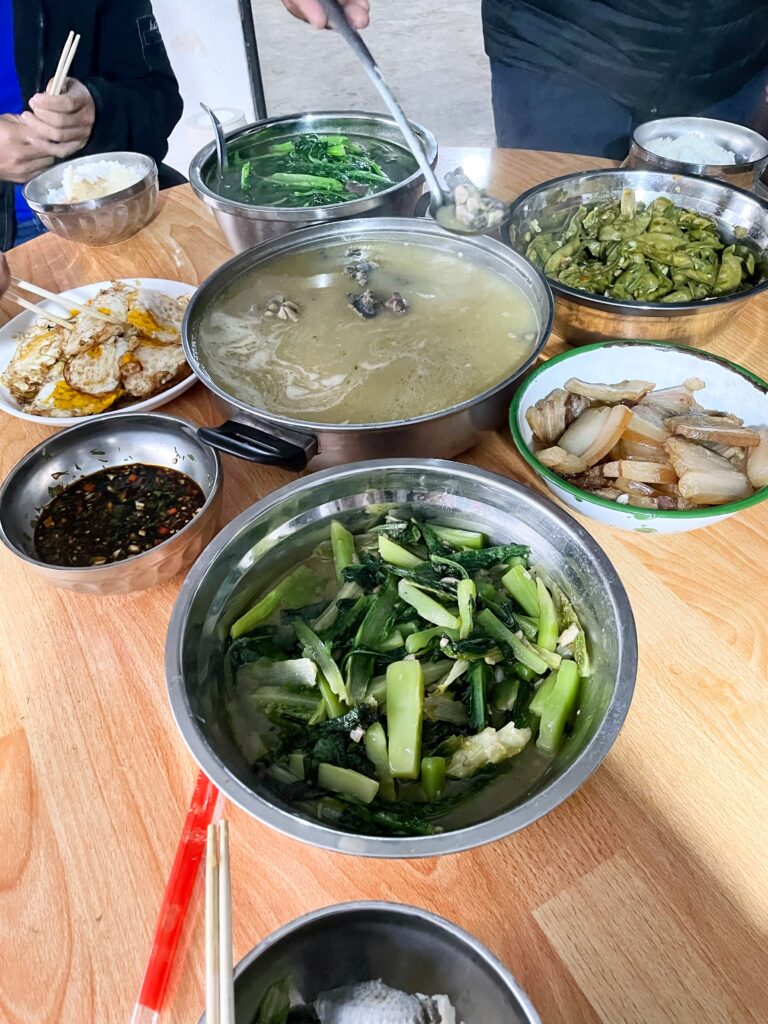


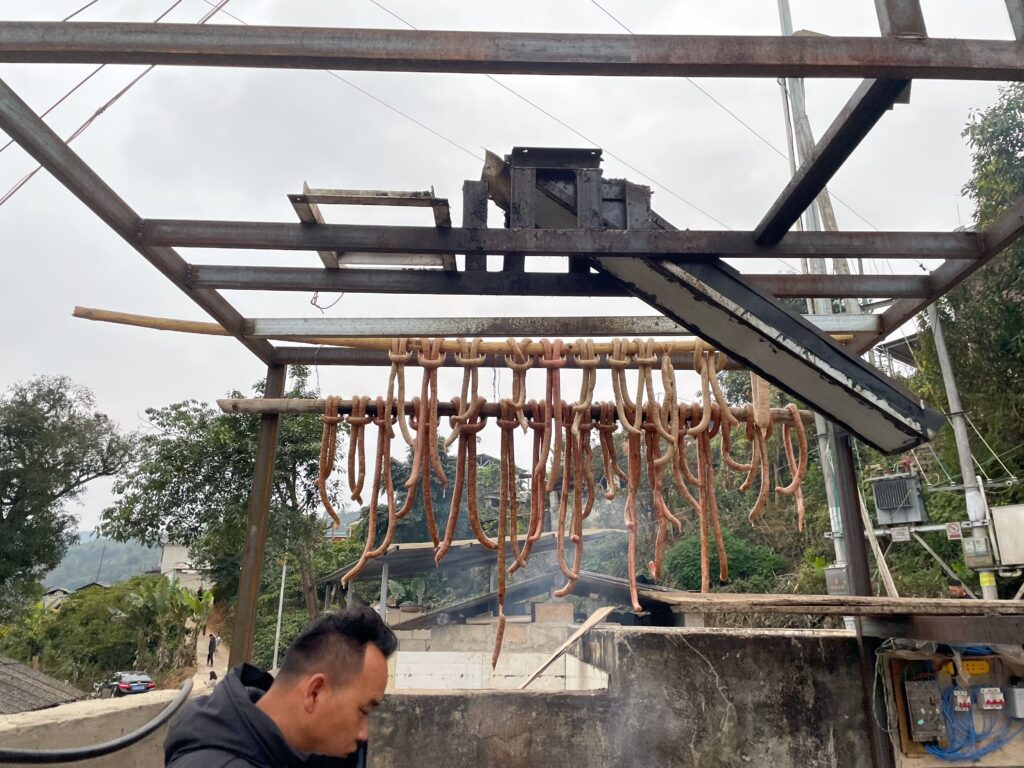

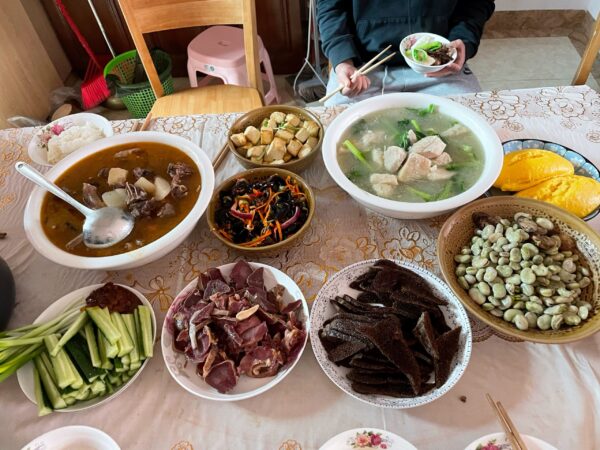

在普洱,我们的一日三餐多和当地居民一起。普洱的腊肉非常有特色,肥而不腻。所有的食材皆是现摘现采,我和朋友大快朵颐。正逢春节期间,我们也有幸赶上普洱村中的杀猪宴。在和当地居民的交流中,非常佩服当地居民的创业以及艰苦奋斗的精神,感受到了当地居民生活日渐提高。(作为地产研究人员表示非常羡慕普洱人均两套房的现状)
In Pu‘er, most of our meals were eaten with the local people. The Chinese bacon in Pu‘er is very special, fat but not greasy. All ingredients are freshly picked and we all enjoy it very much. During the Spring Festival, we were lucky enough to attend the feast in Pu‘er Village. Through the communication with residents, I was very impressed with their entrepreneurship and hard–working spirit, feeling that the living standards of residents are gradually improving. (As a real estate researcher, I am very envious of their current situation with two properties per capita)
“世上本没有路,走的人多了便有了路”。茶马古道便是这样一条历经多朝,由先民开辟出来的贸易之路。茶马古道始于汉朝,是中国古代丝绸之路的重要组成部分。这条世界上海拔最高,最为艰险,也最为神奇壮丽的古道,全长近千公里,由横断山脉东侧的云南和四川出发,跨越青藏高原和云贵高原,穿越横断山脉以及金沙江、澜沧江、怒江、雅砻江向西南延伸,连通着与西亚、南亚、欧洲之间的贸易往来。这条历史悠久,曲折蜿蜒,景色秀丽的古道亦承载着悠悠千载的马帮文化。通过茶马驿站和历史古迹,如今我们仍然窥见那段文化的传奇色彩。
Originally, there is nothing – but as people walk this way again and again, a path appears. The Tea–Horse Ancient Road is such a trade route opened by the ancients. Starting from the Han Dynasty, this was an important part of the Ancient Silk Road in China. Spanning thousands of kilomters, it is the highest and most difficult, as well as the most magnificent ancient road in the world. Starting from Yunnan and Sichuan on the east side of the Hengduan Mountains, it crosses the Qinghai–Tibet Plateau and the Yunnan–Guizhou Plateau, and passes through the Hengduan Mountains and the Jinsha River, Lancang River, Nu River, and Yalong River towards the southwest, connecting the trading with West Asia, South Asia, and Europe. This ancient road, with its picturesque scenery and long-standing history, is also a testament to the thousand-year-old caravan culture.
普洱作为中华茶叶之乡,我们也参观了中华普洱茶博园中的梦之路,和谐园和万亩茶园。在参观和与当地居民的交流中,了解了茶叶的发展历程和古茶的相关知识。
We also visited the Dream Road, Harmony Garden, Tea Garden in the China Tea Expo Garden. We were able to gain insight into the history of tea in Pu’re and all the ancient tea categories, as we interacted with the locals.
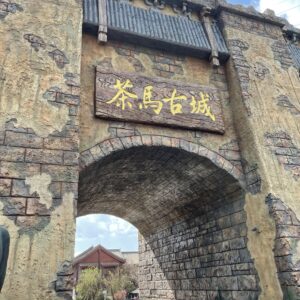




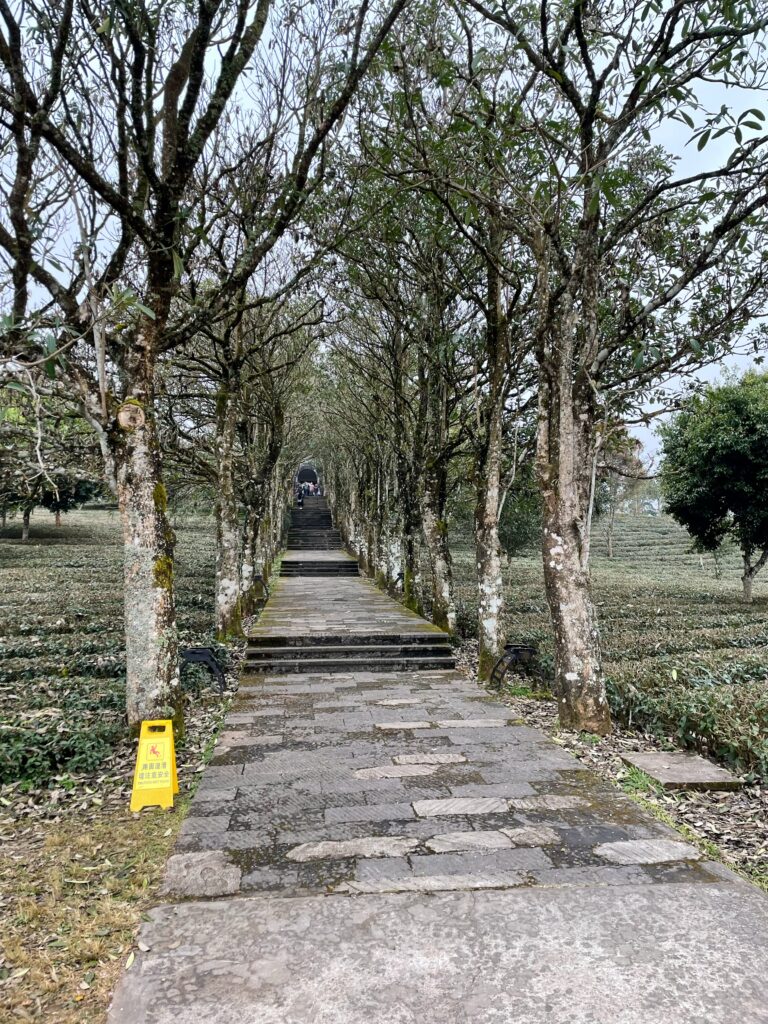

曾经的云南交通不便利,山路崎岖陡峭。父母辈回忆说“当年到云南出差,从腾冲乘车翻越阿里贡山脉经思茅到西双版纳。一路辛苦!” 如今,普洱的交通和基础设施日益发达,盘山泥路逐渐变成条条公路。结束普洱行程,我们乘坐去年通车高铁(中老铁路)到昆明机场乘机,这条铁路贯通昆明到西双版纳,一站一景,整个时长约2个小时,非常便利。
In the past, traveling to Yunnan was a difficult undertaking due to its mountainous terrain. My parents‘ generation recalled that “when they went on a business trip to Yunnan, they took a bus from Tengchong and passed through the Simao and the Ailigong Mountain Range to Xishuangbanna. It was a tough journey!” Nowadays, Pu’er has seen vast improvements in its transportation and infrastructure, with bumpy mountain roads being replaced by highways. At the end of our Pu’er trip, we took the newly opened high-speed railway (the China-Laos Railway) to Kunming Airport. This high–speed railway from Kunming to Xishuangbanna offers a “one station, one landscape“ experience, showcasing a different landscape at each station. (The whole journey of railway took about 2 hours, which made us feel very convenient).

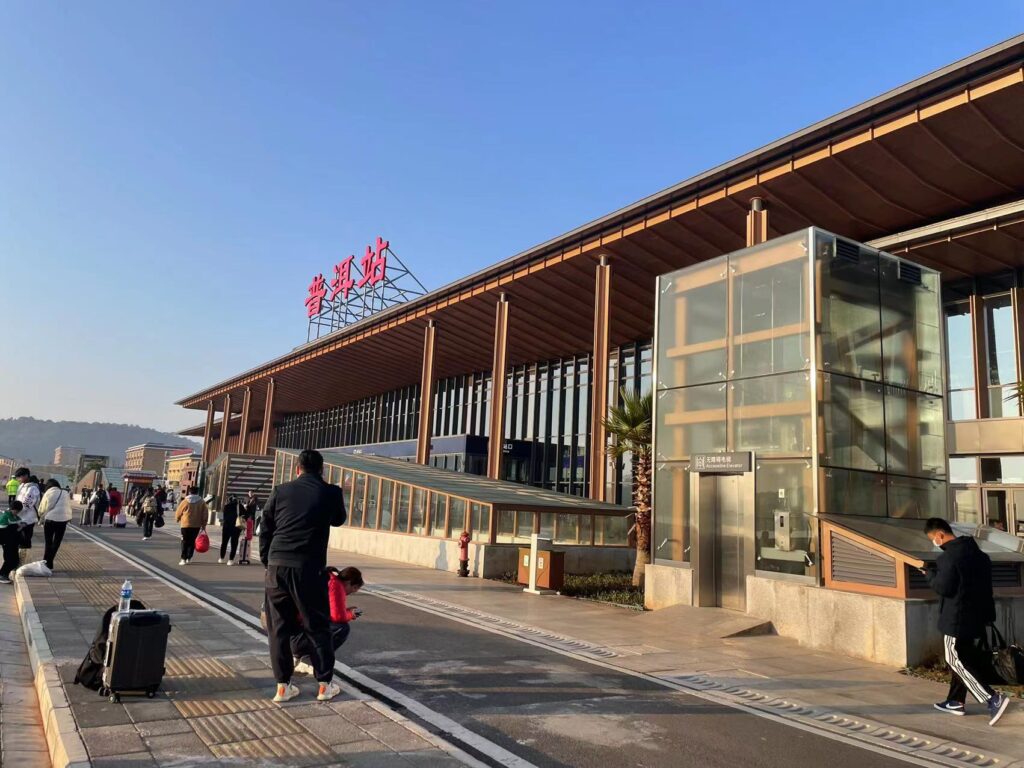




写在最后
一粒小小的咖啡豆,代表的不仅是云南一个产区的产业变迁之路,也折射出中国咖啡大消费市场的曲折漫长历程。远山万物系列希望通过品牌的力量,将云咖和更多的物产带到中国和世界各地。
The little coffee beans represent not only the industrial transformation of Yunnan, but also the long and winding journey of the Chinese coffee consumption market. Through the power of our brand, we aspire to bring Yunnan coffee and more products to every corner of China and the world.
